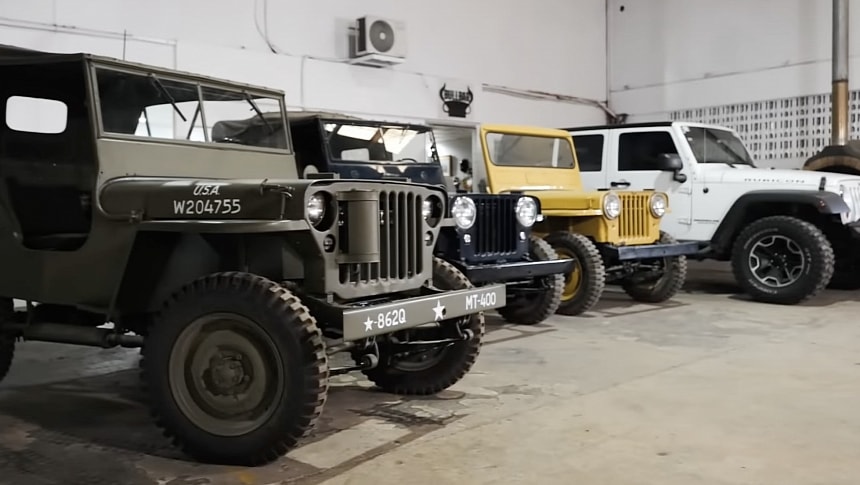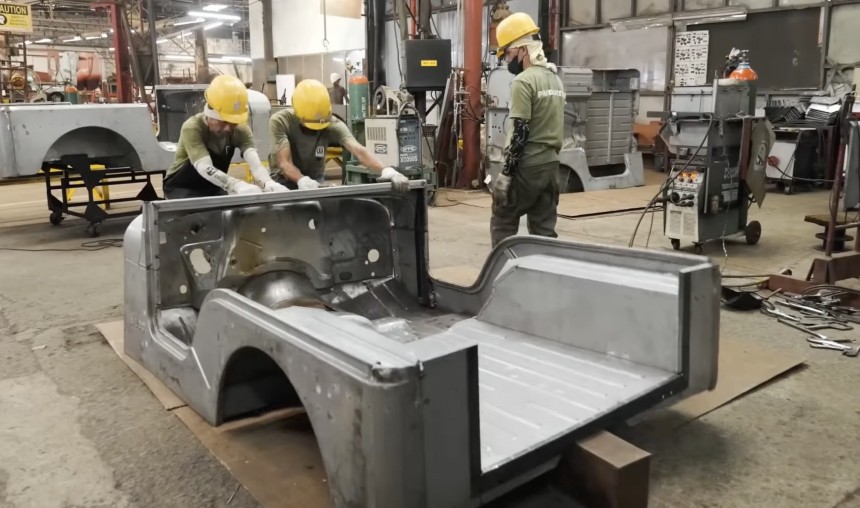Automotive manufacturing has been changing radically for the past few decades. It has progressively switched to automation, using robots for fastidious or dangerous tasks in order to keep human operators safe and prevent fatigue. However, there is one factory in the Philippines where vintage Jeeps are still built by hand. Workers screw bolts, paint, and carry body panels as if it is still the 1960s.
It is the MD Juan Enterprises, Inc., a factory in the Philippines, which seems trapped in time. Operating since March 1967 and founded by Dr. Maximino D. Juan, the center has been rolling out vintage Jeep bodies, popularly known locally as Jeepstars.
The company originally imported surplus World War II Jeeps from Europe and Japan, fixed them, and sent them to the public roads in the country. Soon, it began to build its own. At first, the facility produced MB and M38 military vehicles and eventually expanded production, also building civilian models, such as the CJ series.
By 1970, it ventured into export operations, sending the products that it built to Japan, Australia, and New Zealand, and also the US. The models they made were a sight to behold outside the Philippines.
They were exhibited at trade fairs and car shows around the world. They got so much attention that the Asian plant eventually established a dealership network in Europe, Australia, New Zealand, and the United States.
The success simply snowballed, and in 1980, MD Juan made the Renegade CJ-7. A decade later, it started producing the Willys MB, Ford GPW, and composite bodies. In 2008, they rolled off the production line six variants of the CJ5 body kits and tubs.
A partnership with Speed Parts Australia shot them straight to the off-road market in 2014. Next year, the company got the ISO 9901:2008 Certification from TUV (Technischer Uberwachungsverein), which is German for Technical Inspection Association.
Things went further. Literally, too. In 2019, MD Juan started building and supplying trailers to the United States. It was then that they could afford to purchase a laser machine and a press brake machine. Two years later, the facility installed solar panels. In 2023, another laser machine arrived to help them expand production.
Right now, all machinery is a bit rusty, but operated by dedicated workers, it works properly. Many of the tools they command are more than half a century old. They carry the body panels with bare hands, there are no hydraulic arms to do the job for them. They bolt them one to another and still use hammers to straighten the metal sheets.
The center not only builds these old Jeeps, but also repairs and restores them. Owners from all over the world send their vehicle there and have them back looking and working as good as new.
The company originally imported surplus World War II Jeeps from Europe and Japan, fixed them, and sent them to the public roads in the country. Soon, it began to build its own. At first, the facility produced MB and M38 military vehicles and eventually expanded production, also building civilian models, such as the CJ series.
By 1970, it ventured into export operations, sending the products that it built to Japan, Australia, and New Zealand, and also the US. The models they made were a sight to behold outside the Philippines.
They were exhibited at trade fairs and car shows around the world. They got so much attention that the Asian plant eventually established a dealership network in Europe, Australia, New Zealand, and the United States.
A partnership with Speed Parts Australia shot them straight to the off-road market in 2014. Next year, the company got the ISO 9901:2008 Certification from TUV (Technischer Uberwachungsverein), which is German for Technical Inspection Association.
Things went further. Literally, too. In 2019, MD Juan started building and supplying trailers to the United States. It was then that they could afford to purchase a laser machine and a press brake machine. Two years later, the facility installed solar panels. In 2023, another laser machine arrived to help them expand production.
Right now, all machinery is a bit rusty, but operated by dedicated workers, it works properly. Many of the tools they command are more than half a century old. They carry the body panels with bare hands, there are no hydraulic arms to do the job for them. They bolt them one to another and still use hammers to straighten the metal sheets.
The center not only builds these old Jeeps, but also repairs and restores them. Owners from all over the world send their vehicle there and have them back looking and working as good as new.













